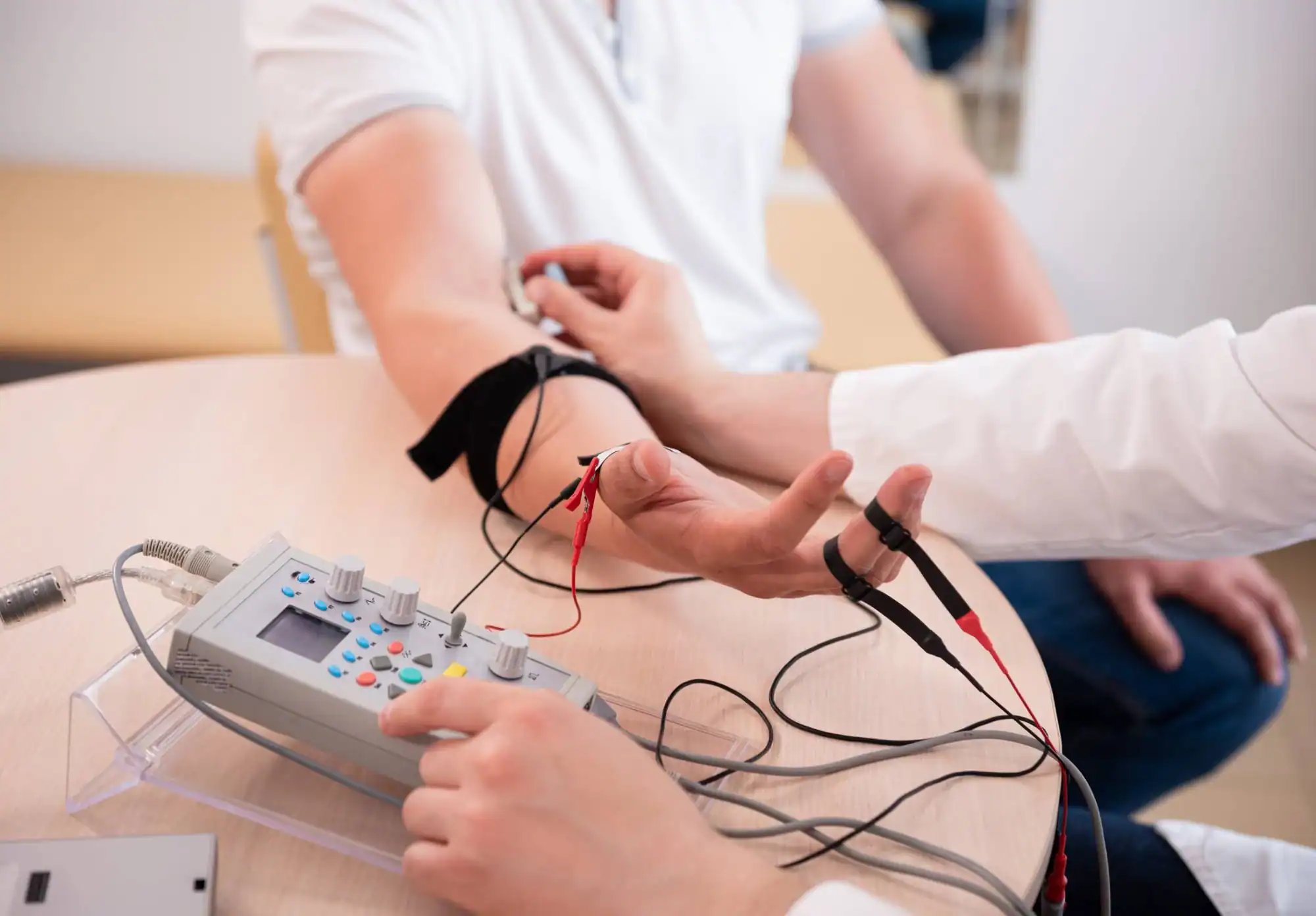Advanced electromyography testing that pinpoints exactly what’s causing your numbness, tingling, or muscle weakness.
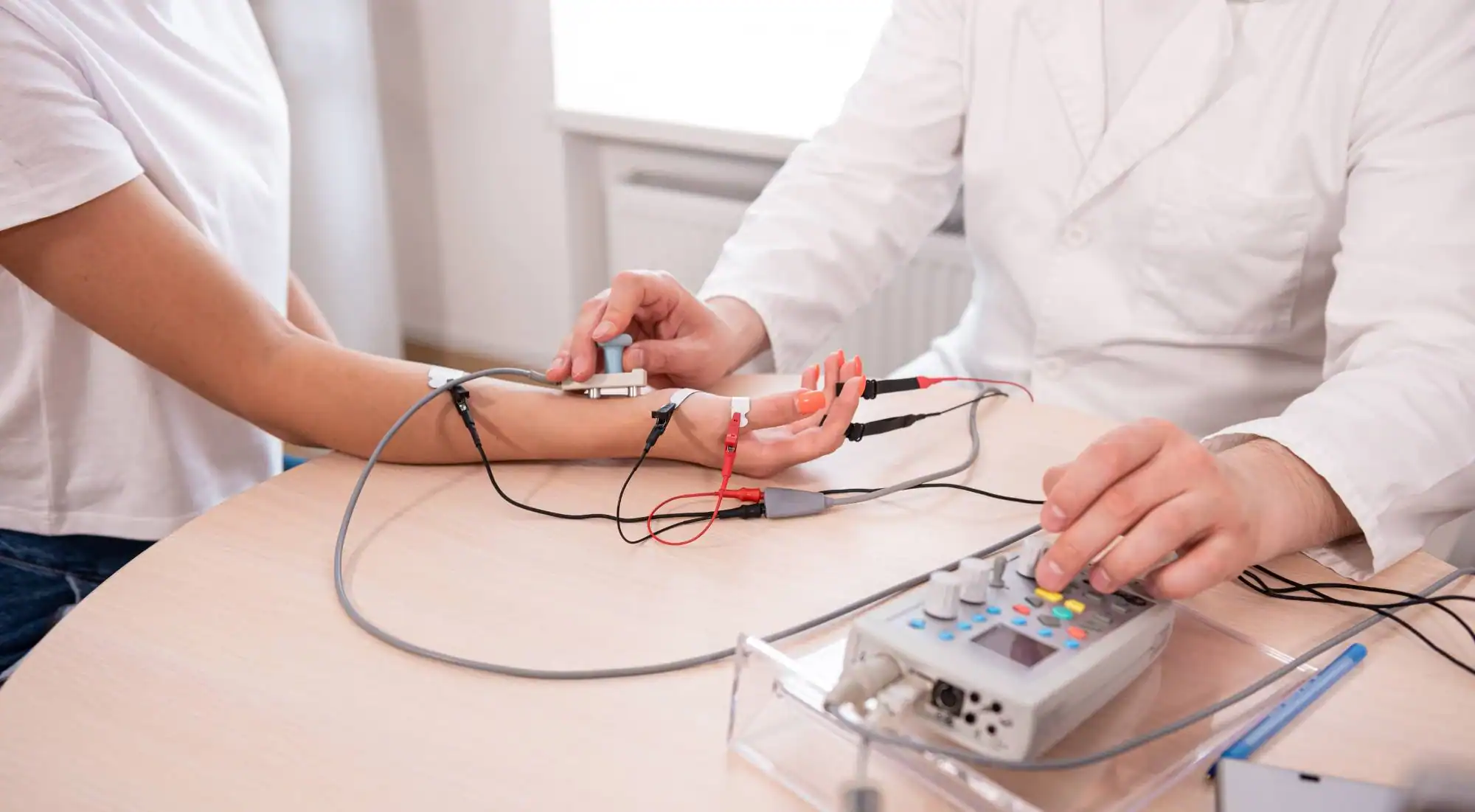
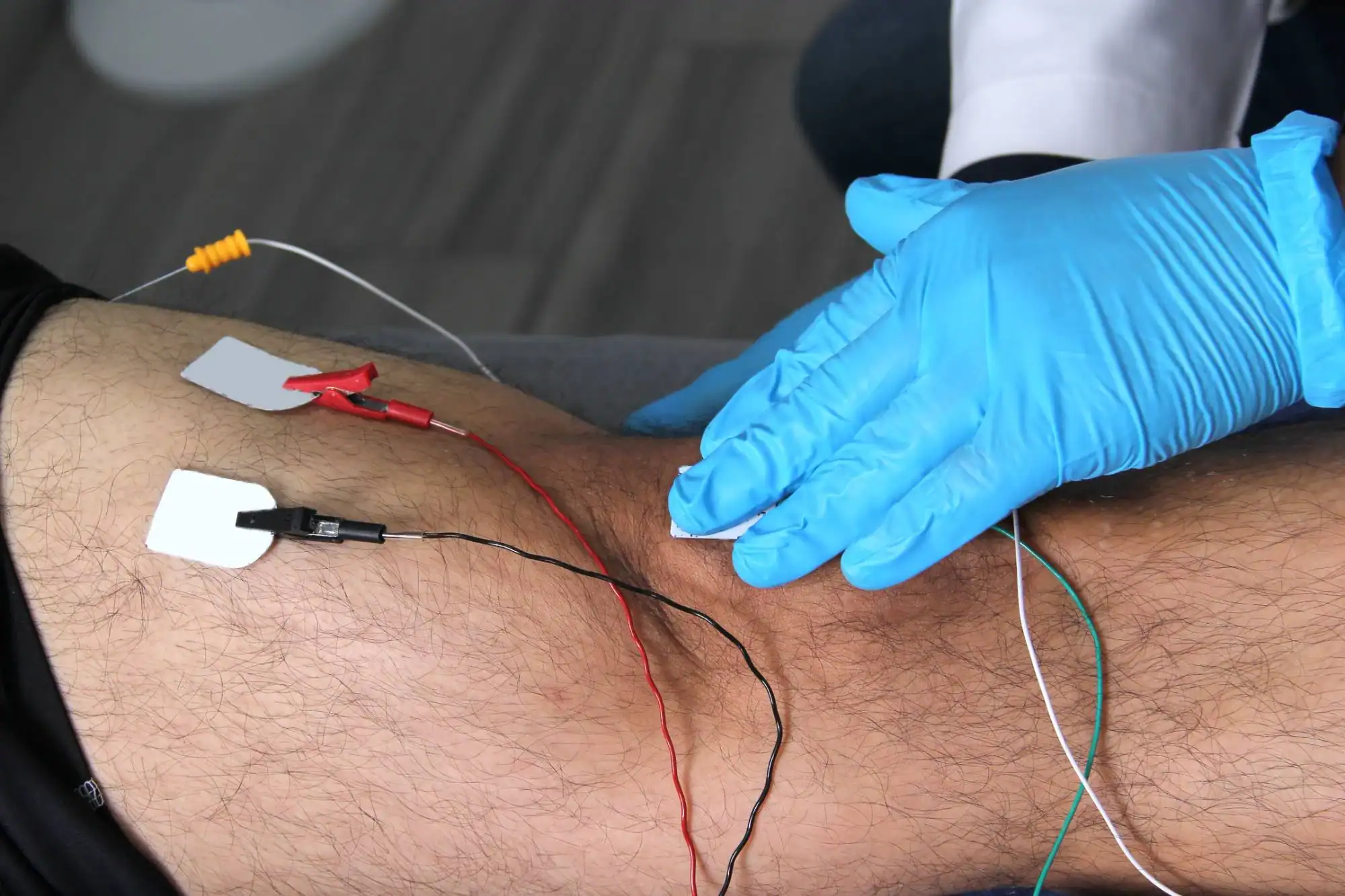
You’ve been dealing with strange sensations for months. Maybe it’s numbness in your hands that wakes you up at night. Or tingling in your feet that makes walking uncomfortable. Your regular doctor says “let’s wait and see,” but you need real answers.
EMG testing gives you those answers. This diagnostic procedure measures the electrical activity in your muscles and nerves, showing exactly where problems exist and how severe they are.
Instead of guessing whether you have carpal tunnel syndrome, sciatica, or diabetic neuropathy, you’ll know for certain. That means targeted treatment instead of trial-and-error approaches that waste your time and money.
NY Spine Medicine brings advanced neurological diagnostics to the Fisher Island area. We specialize in identifying and treating nerve and muscle disorders that cause chronic pain and dysfunction.
We combine state-of-the-art EMG technology with years of experience interpreting complex test results. You’re not just getting a test – you’re getting expert analysis from physicians who understand exactly what your symptoms mean.
This isn’t a one-size-fits-all approach. Every EMG test is tailored to your specific symptoms and concerns, ensuring you get the precise information needed for effective treatment.
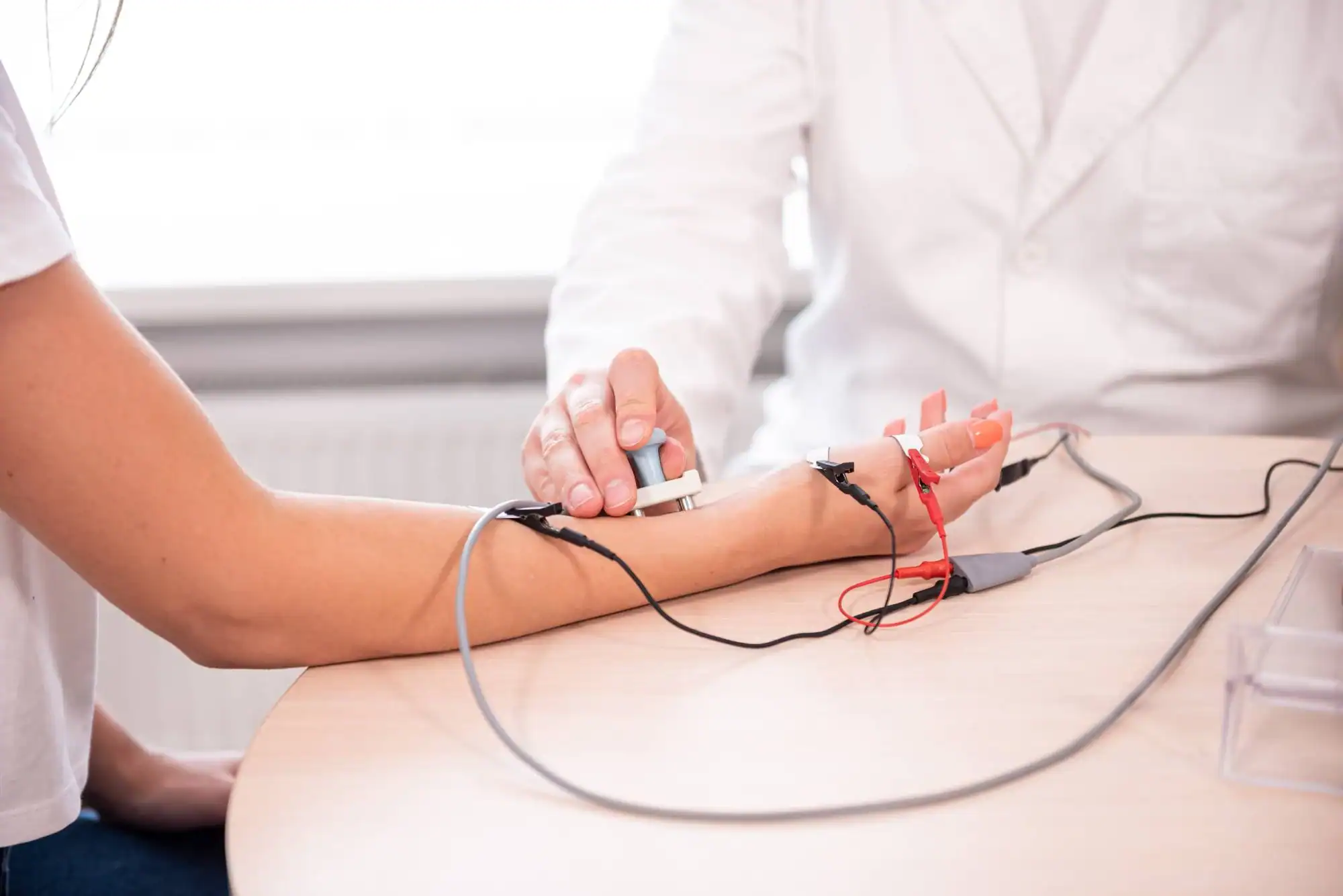
Your EMG test starts with a detailed discussion of your symptoms. We need to understand exactly what you’re experiencing – when the numbness started, what makes it worse, how it affects your daily activities.
The actual testing involves two parts. First, nerve conduction studies use small electrical impulses to measure how well your nerves transmit signals. Then, electromyography uses thin needle electrodes to record electrical activity in your muscles.
Most patients find the procedure much more comfortable than expected. The entire process typically takes 30-60 minutes, and you’ll get preliminary results immediately. Within a few days, you’ll have a comprehensive report explaining exactly what’s happening with your nerves and muscles, plus recommended treatment options.
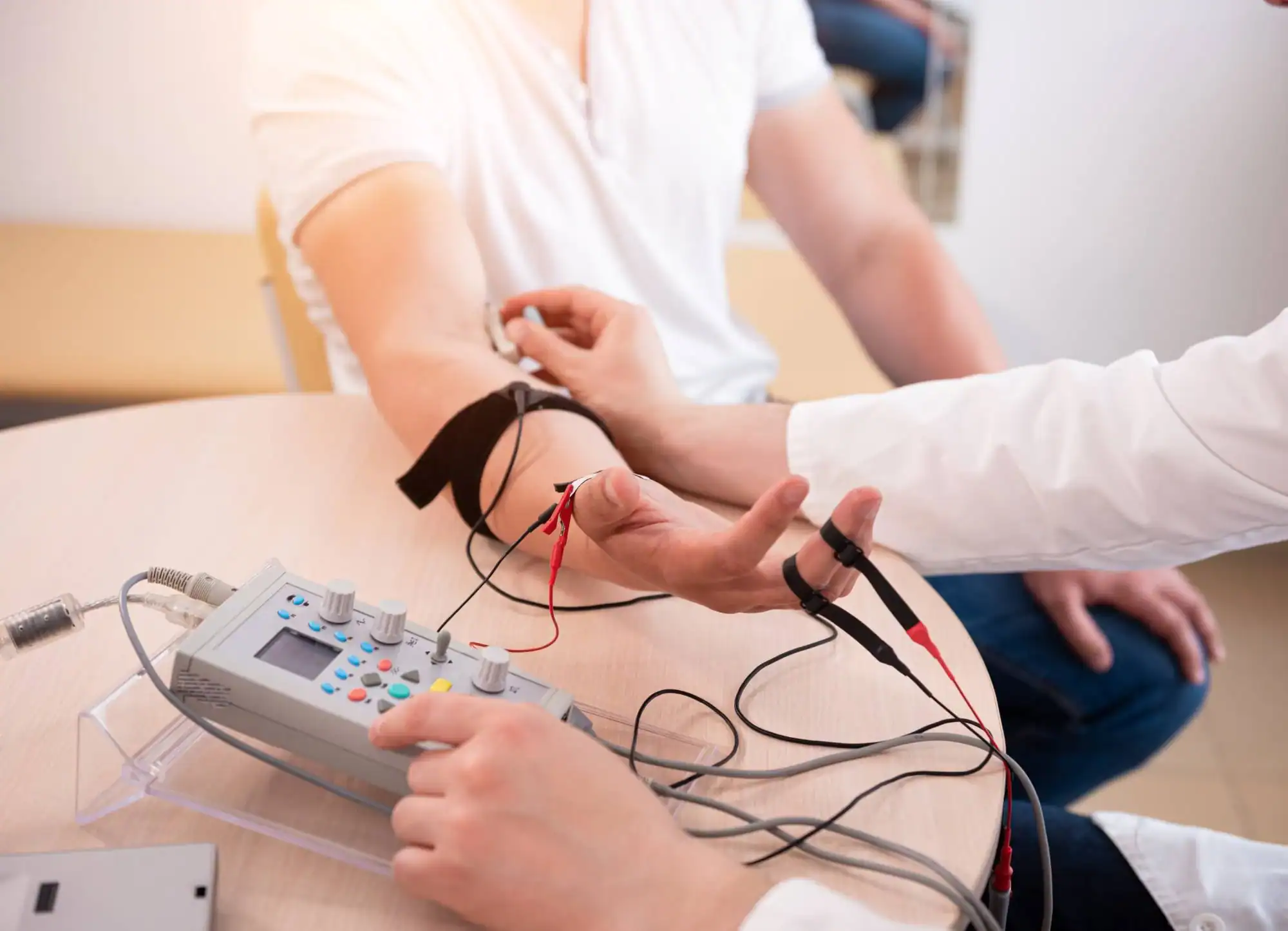
Ready to get started?
Your EMG testing includes both nerve conduction studies and needle electromyography. This combination provides a complete picture of nerve and muscle function, identifying problems that single tests might miss.
The testing can diagnose carpal tunnel syndrome, ulnar neuropathy, sciatica, peripheral neuropathy, muscle disorders, and other conditions causing your symptoms. You’ll also learn about the severity of any problems and whether they’re getting worse.
After testing, you receive a detailed report explaining the findings in clear language. We will discuss treatment options, from conservative approaches like physical therapy to more advanced interventions when necessary. Everything is coordinated through our spine medicine practice, so you don’t need to navigate multiple specialists.
